In the Weeds: Glossary of Terms
This is a brief illustrated glossary of botanical terms found in the plant entries of In the Weeds. Follow the links at the bottom of the page to search for terms not listed here.
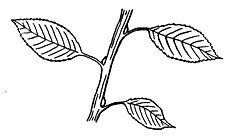
Alternate – when leaves are arranged alternately along stem (as opposed to opposite).1
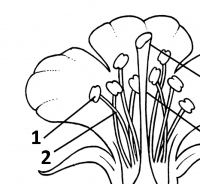
Anther – organs at the end of stamens carrying powdery yellow or orange pollen. Stamens and anthers are male organs.1 Above, 1 shows the anther and 2 shows the stamen.

Compound – a leaf that is divided into two or more leaflets.4
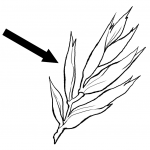
Floret – small flowers which have no petals, found on grasses and sedges.1
Genus – a group of plants that scientists have determined are related, and the first part of any plant’s scientific name; think “generic”.5
Example: Rosa rugosa – the genus is Rosa
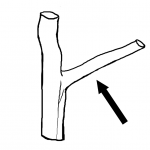
Lateral branch – a shoot rising off of the main stalk or trunk.3
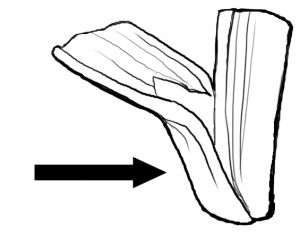
Leaf sheath – seen on grasses and sedges, the portion of the leaf that wraps around the stem.1
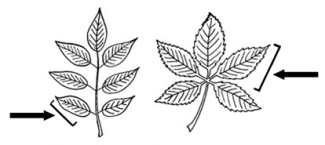
Leaflet – often resembling small leaves, leaflets are the parts of a compound leaf.
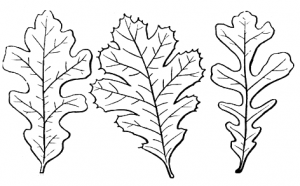
Lobed – leaf with large indentations that do not reach the middle vein of the leaf as compound leaves do.4
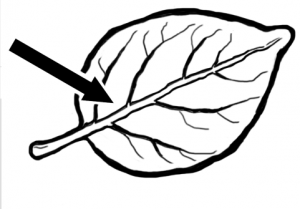
Mid-vein – the central vein of a leaf.2
Monoculture – an area comprised of mainly one species of plant; very low biodiversity.
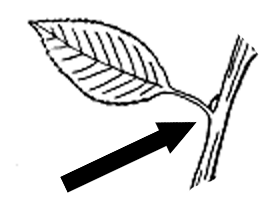
Node – position on stem where leaf or branch originates.3
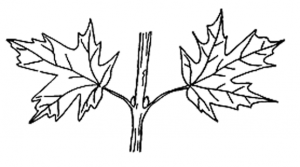
Opposite – leaves arranged in pairs growing from one node directly across from one another on stem (as opposed to alternate).4
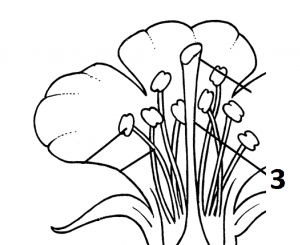
Pistil – the female organ, usually located at the center of the flower.1 Above, 3 shows the pistil.
Pith – The spongy, central tissue in some twigs and stems.5 Break a small twig to discover the color of the pith.
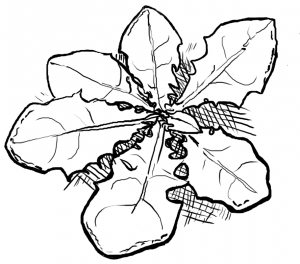
Rosette – leaves overlapping and growing in whorl (see below) that is very close to the ground.2
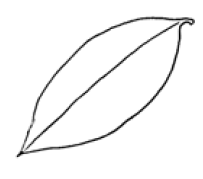
Simple – the most common shape for a leaf, may be lobed but is not divided into leaflets.3
Species – the second part of any plant’s scientific name, which has no meaning on its own. Describes one kind of plant within the genus; think “specific”.5
Example: Rosa rugosa – the species is rugosa
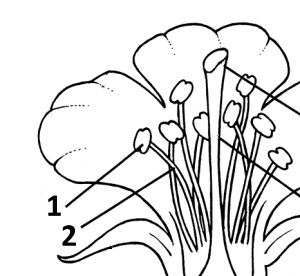
Stamen – thin shaft holding up the pollen-bearing anther. Anther and Stamen are male organs.1 Above, 1 shows the anther and 2 shows the stamen.
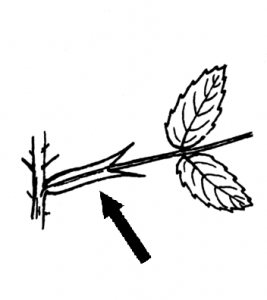
Stipule – A leaf-like structure that occurs where the leaf joins the stem; stipules occur in pairs.1
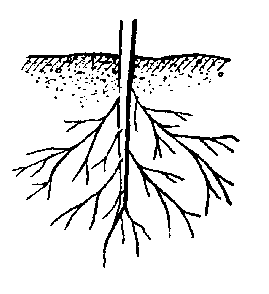
Taproot – a root that originates from center of a plant.1

Tendril – a slender, twining organ used to grasp support for climbing.3
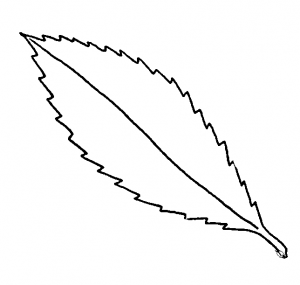
Toothed – leaf edge that is saw-like.4
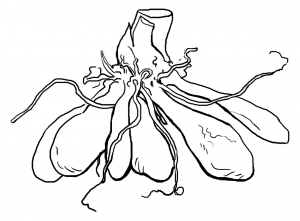
Tuberous root – a coarse root, thickened for nutrient storage.2
Variety – a population of plants within a species that differs significantly from other members of the species. The third part of a plant’s scientific name, appearing in single quotation marks. When intentionally cultivated by people a variety can also be referred to as a cultivar.5
Example: Euonymus alatus ‘Compactus’ – the variety is Compactus
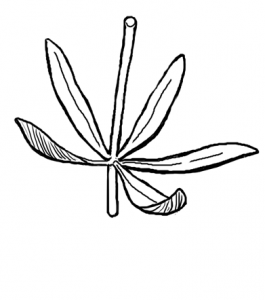
Whorl – where three or more leaves or petals arise from the same point and form a circle around it.4
